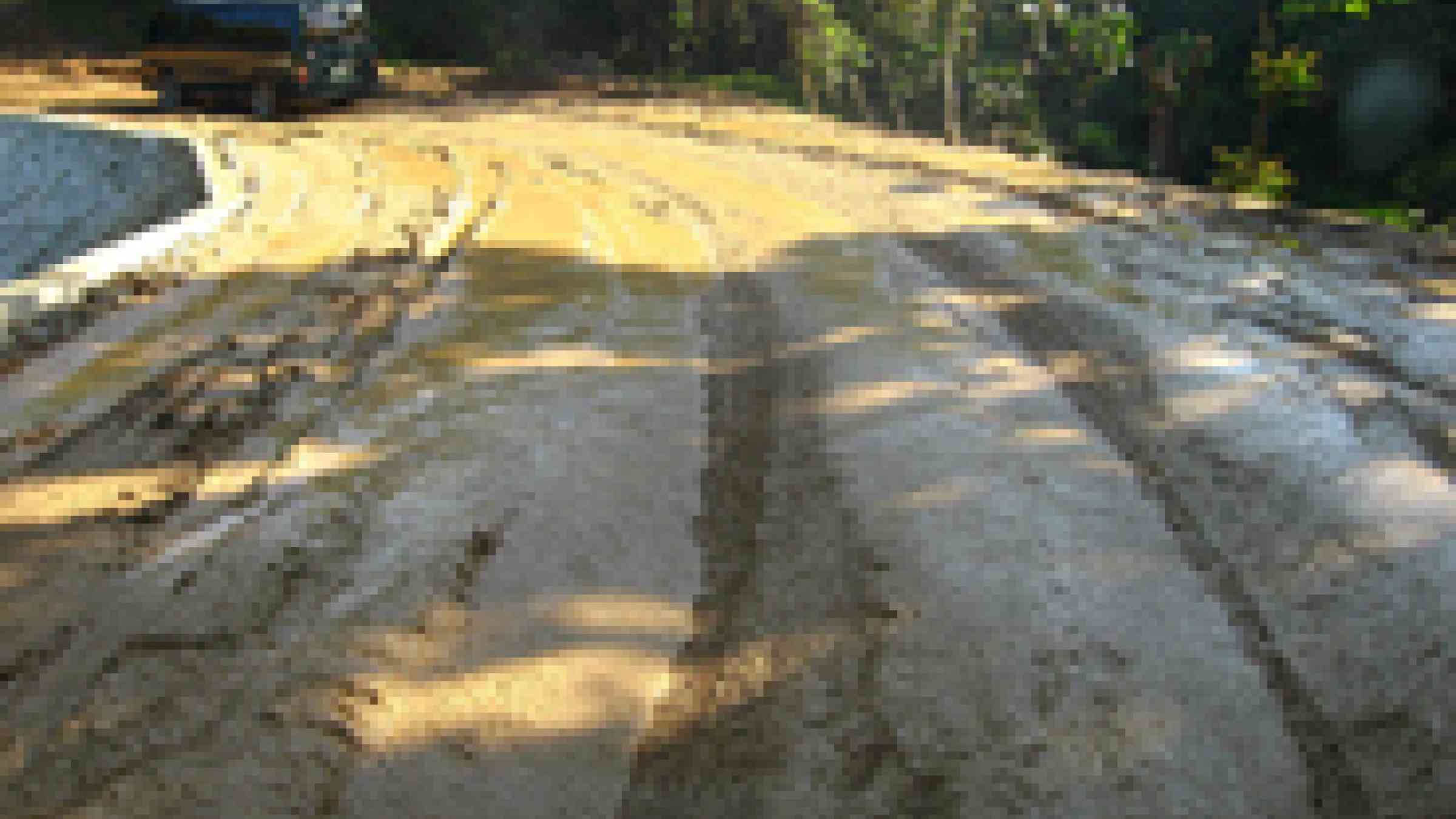Please help us improve PreventionWeb by taking this brief survey. Your input will allow us to better serve the needs of the DRR community.
Philippines: Executive order No. 137 declares July as the national disaster consciousness month (NDCM)

Philippines mud road; photo by flickr user erasmusa, creative commones attribution attribution-noncommercial-share alike 2.0 generic
The Philippines is located within the Pacific ring of fire: it has geo-physical, hydrometeorological, and conflict-borne hazards. These factors are further aggravated by the conditions brought about by the current socio-political and economic dynamics at play.
Among the most common disasters that hit the country are typhoons, flooding, storm surges, landslides, volcanic eruptions, lahar and mud flows, and earthquakes. And for every time that such calamities strike, the toll remains high for the loss of life, properties and opportunities.
While the country has maintained a level of resilience and has developed appropriate response mechanisms to cope with the dangers of natural and human-induced disasters, the Philippines still needs to prepare for climate change impact.
In recent years, we can easily recall the catastrophic disasters that devastated our country, among them are the following:
People will never forget the "July 1990 Killer-Earthquake" reaching up to the magnitude of 7.7 in the Richter Scale which struck Central and Northern Luzon. This earthquake was considered as the most devastating disaster to hit the country in terms of damage which was pegged at PhP12.25 billion with 1,604 casualties and affecting 1.25 million Filipinos.
The cataclysmic eruption of Mount Pinatubo in 1991 displaced families and caused 850 deaths and destroyed an estimated PhP10.62 billion worth of properties. In the same year, we can also recall the infamous Ormoc Tragedy, wherein the sudden rush of flood waters inundated 250 barangays in 13 municipalities in the Provinces of Leyte and Eastern Samar, and the Cities of Tacloban and Ormoc. This tragic event claimed 5,101 lives and damaged PhP 812 million worth of properties. Landslides also devastated Cherry Hills Subdivision in Antipolo in August 1998 wherein 54 lives were lost. In July 2000, a similar tragedy in Payatas also took away 224 lives.
Southern Leyte was devastated by two major landslides. In December 2003, three successive landslides hit the towns of San Ricardo and San Francisco. This disaster claimed 154 lives and brought damage to PhP35 million worth of properties. The shocking news of a town buried in mud and other debris came when tragedy hit Barangay Guinsaugon in Saint Bernard. The site reveals a portion of the nearby mountain has collapsed and as a result thereof 3,811 families suffered while infrastructure and agriculture damages were placed at PhP114.8 million.
El Niño also left its toll on the Philippines when it hit the country. This phenomenon affected 16 regions and the estimated cost of damage to agriculture pegged at PhP8.45 billion and directly affected 209,255 families.
Tragedies leave us scarred and traumatized - complete healing may be long and may even be frustrated by the perennial characteristics and increasing severity of these types of hazards. Our resilience as a nation has been tried and tested. But this should not only be our only source of strength otherwise, our perspective of socio-economic development will remain hindered by our natural vulnerability. Although these disastrous events may be fortuitous in nature, there are practical solutions that we can do to avert or minimize the potential damage. This is the overall thrust for the annual observance of the NDCM.
As the highest policy-making and coordinating body for disaster management, the National Disaster Coordinating Council (NDCC) remains actively focused on carrying out the government's notable efforts and programs, on disaster mitigation, preparedness, response and rehabilitation. The Council is composed of twenty department/agency heads with the Secretary of National Defense, Gilberto C Teodoro Jr as Chairman.
The NDCC serves as an advisory body on disaster preparedness programs, disaster operations and rehabilitation efforts undertaken by the government and other stakeholders. The Administrator of the Office of the Civil Defense, Major General Glenn J. Rabonza, AFP (Ret) acts as the Council's Executive Officer and Secretariat.
To make the observance of this year's NDCM more meaningful, the NDCC intends to highlight on the major activities that aim to increase awareness on the significance of building community resilience to disasters and strengthening local capacities for effective emergency response.
Explore further
Please note: Content is displayed as last posted by a PreventionWeb community member or editor. The views expressed therein are not necessarily those of UNDRR, PreventionWeb, or its sponsors. See our terms of use
Is this page useful?
Yes No Report an issue on this pageThank you. If you have 2 minutes, we would benefit from additional feedback (link opens in a new window).